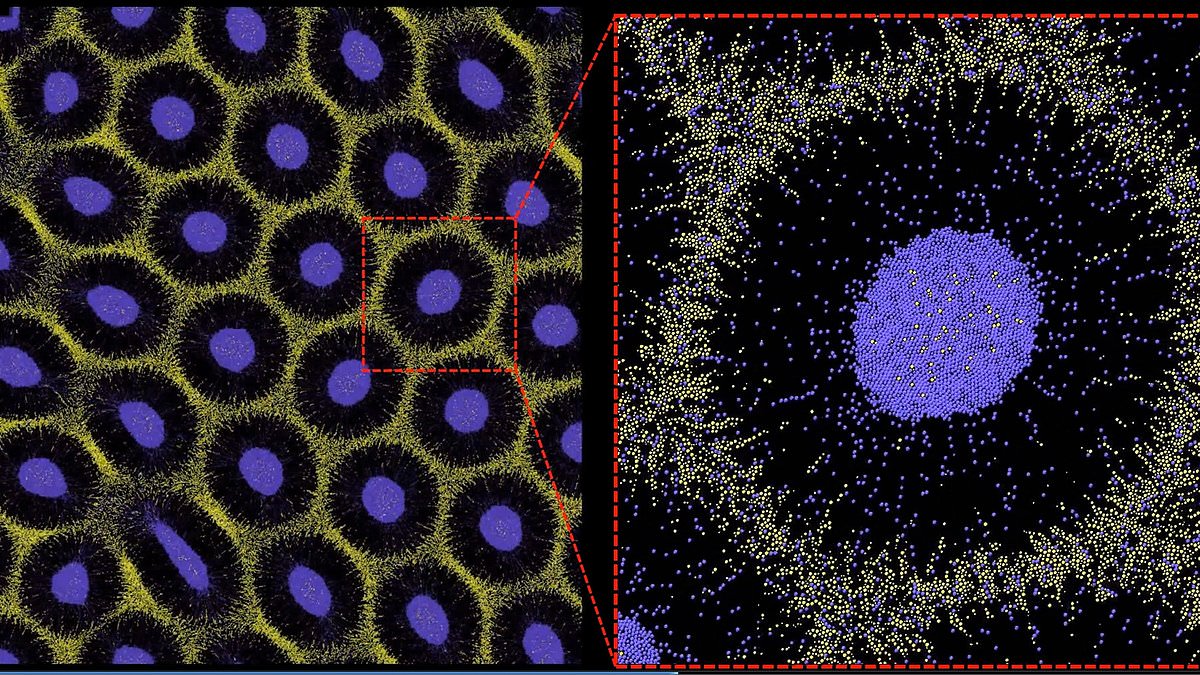Copyright dailymail

How the leopard got its spots: Age–old question of how animals develop their patterns may have finally been solved READ MORE: Can YOU spot the hidden animals that use cunning camouflage? By XANTHA LEATHAM, EXECUTIVE SCIENCE EDITOR Published: 15:00 GMT, 27 October 2025 | Updated: 15:10 GMT, 27 October 2025 Spots and stripes can be found everywhere in the animal kingdom. From the savannahs of Africa to the coastal waters off southern Australia, countless species boast distinctive markings. For decades, scientists have been trying to work out how these animals develop their unique patterns. Now, they may have just figured it out. Building on work by previous researchers – including mathematician Alan Turing – a team have proposed a 'simple idea' that can explain how cells assemble to create patterns. 'Imperfections are everywhere in nature,' they wrote in the journal Matter. 'Our work bridges the gap between idealised models and the messy beauty of real systems.' Using their model, they were able to simulate the development of patterns that look strikingly similar to what appears in nature – finally cracking the code behind how markings form. Experts looked at natural patterns in fish – such as the hexagonal markings on ornate boxfish – and tried to recreate them for their study The team said imperfections are 'everywhere' in nature – adding that spots and stripes are rarely uniform (file image) Building on work by previous researchers – including mathematician Alan Turing – a team have proposed a 'simple idea' that can explain how cells assemble to create patterns such as the stripes that zebras are famous for (file image) The team started with a theory, first proposed by Turing, which suggests as skin tissue develops it produces chemicals that diffuse into the system – similar to pouring milk into coffee. Some of these chemicals activate pigment–producing cells, forming spots or stripes, while other chemicals inhibit these cells, creating the blank spaces in–between. Computer simulations using this theory, however, produced spots that were blurrier than those found in the natural world. Next, they added another layer to the theory – that cells use a mechanism called diffusiophoresis to 'pull' other particles along with them. Attempts to recreate the hexagon patterns found on ornate boxfish showed this extra 'rule' created results that were too perfect – all hexagons were the same size and shape and the space between them were identical. The final piece of the puzzle, they found, lies in the fact that developing cells are different sizes, meaning they produce imperfect patterns and textures when they move. Their final simulations showed breaks and grainy textures that looked far more like what's found in nature. 'We are able to replicate natural patterns with striking similarity,' they wrote. The team reveal how pigment cells begin scrambled together (as pictured) before separating to form distinct patterns Here, the diffusiophoresis process can be seen underway as the cells move and 'pull' other particles with them The final result is a pattern that looks 'strikingly' similar to those that appear in nature, they concluded So THAT'S how the zebra got its stripes! Monochrome pattern helps to repel pesky biting horseflies, study claims Lead researcher Ankur Gupta, from the University of Colorado at Boulder, said humans have always drawn inspiration from nature. Understanding how pattern–making cells assemble could help engineers design materials than can change colour based on the environment, much like a chameleon's skin. It could also help design effective approaches to deliver medicine to a specific part of the body. 'We are drawing inspiration from the imperfect beauty of natural system and hope to harness these imperfections for new kinds of functionality in the future,' he said. ZEBRA STRIPES: A RANGE OF THEORIES HAVE TRIED TO ANSWER WHY THEY EXIST There are several possible explanations as to why zebras have black and white stripes, but a definitive answer remains to be found. There are a number of theories which include small variations on the same central idea, and have been divided into the main categories below. Apparent size increase Visibility in poor light Moving stripes may dazzle predators Camouflage Social benefits Fitness indication Protection from tsetse flies. The areas of research involving camouflage and social benefits have many nuanced theories. For example, social benefits covers many slight variations, including: Zebras recognise each other on the basis of their stripes This is especially important in the visual communication between mothers and their foals Stripes might also be visual markers for group bonding or to direct companions to particular parts of the body for grooming. Anti-predation is also a wide-ranging area, including camouflage and various aspects of visual confusion. These explanations have been thoroughly discussed and criticised by scientists, but they concluded that the majority of these hypotheses are experimentally unconfirmed. As a result, the exact cause of stripes in zebra remain unknown. Share or comment on this article: How the leopard got its spots: Age-old question of how animals develop their patterns may have finally been solved Add comment



